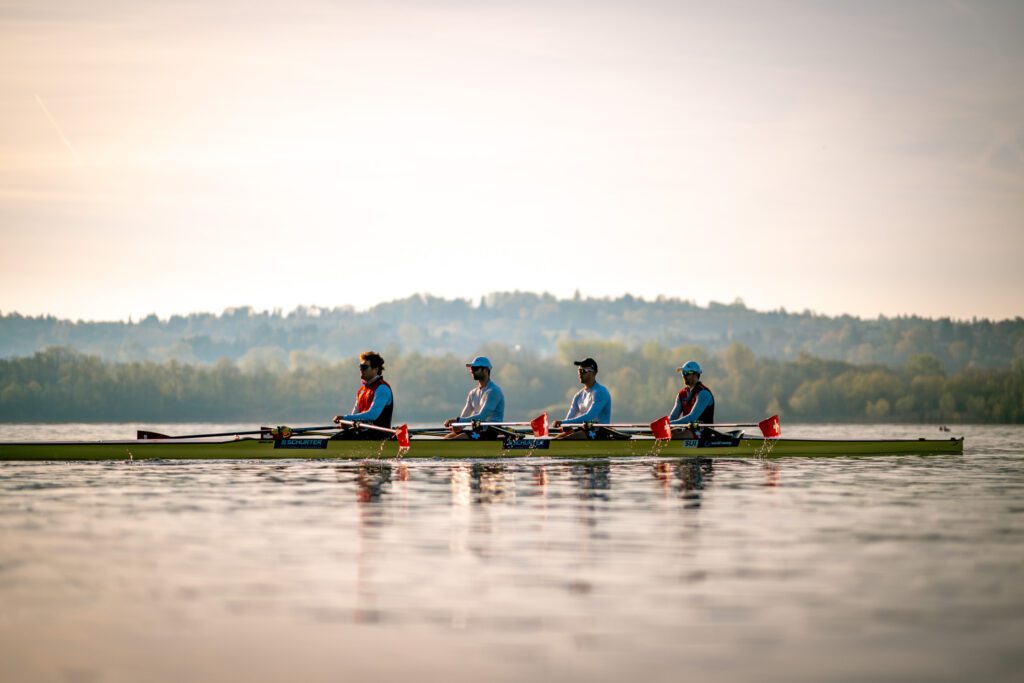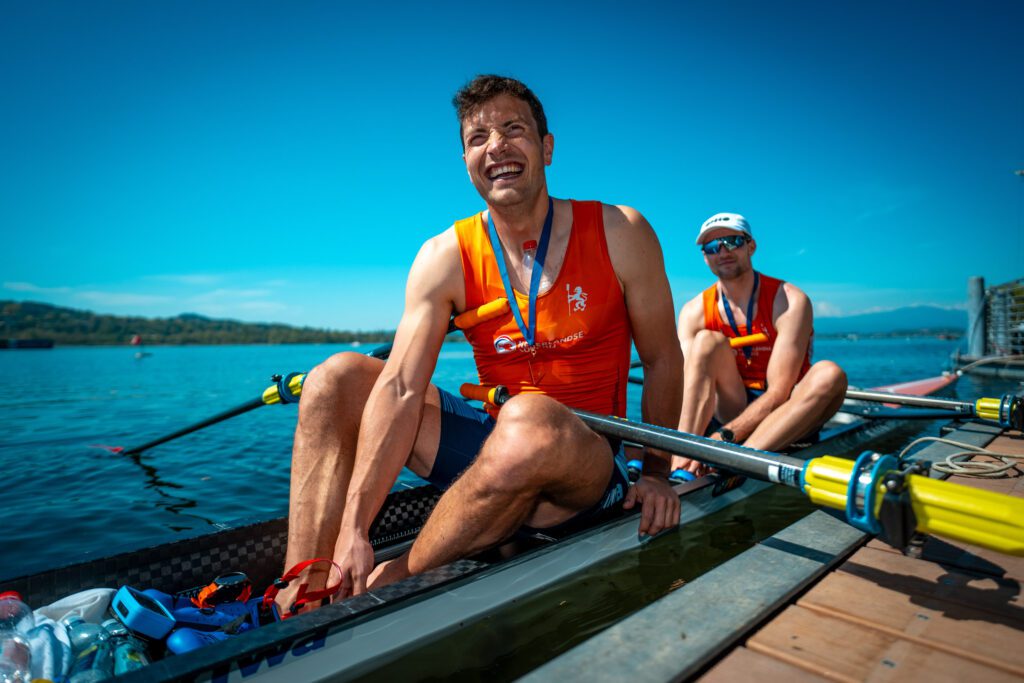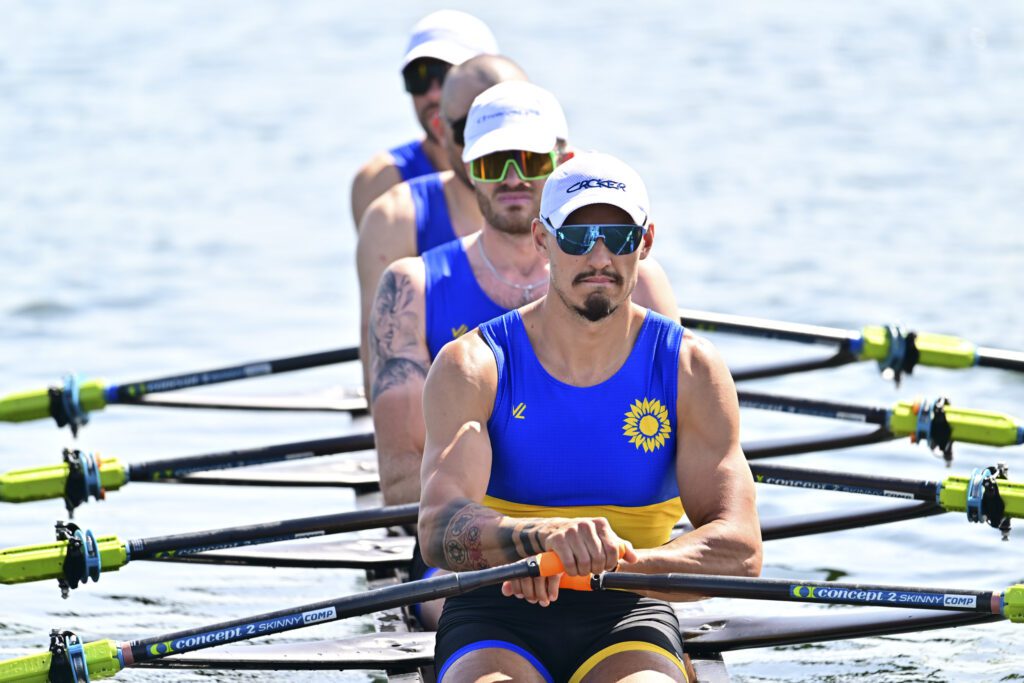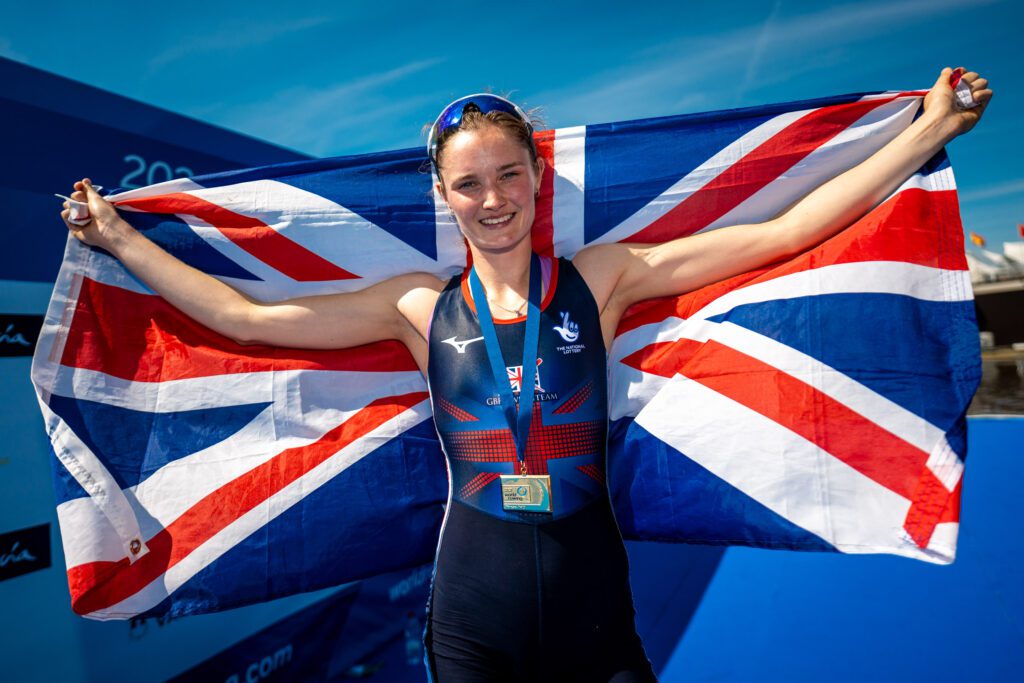In the summer of 2015, YouTube enabled televisions, desktops, tablets and mobile devices lit up with high quality, live coverage of every race contested at that summer’s Henley Royal Regatta. With pioneering use of aerial drone footage it has been described as the greatest rowing coverage produced, bar none. Row360 spoke to two of the people responsible for delivering it; Henley Steward Neil Chugani and executive producer with Sunset + Vine Andrew Preece.
Video Henley’s world class coverage from 2017
Neil Chugani, Steward, Henley Royal Regatta:
Live streaming the Regatta was of course a few years in the making. My involvement started in the middle of 2013. Mike Sweeney was Chairman at the time and I had been a Steward for about six months. Having worked previously at Sky and the BBC, I had been earmarked as the ‘TV guy’ and Mike asked me to take the lead in assessing the feasibility of televising the Regatta. So began an 18-month process, in which we went to various production companies and asked them to pitch for the job.
We decided early on that the Regatta should retain complete editorial control. We wanted to present the Regatta as rowers would want to experience it. I think that was very important. We didn’t want a broadcaster who, though maybe willing to meet a larger proportion of the production cost, wanted to take control of the look and feel of the finished product.
I think a lot of people thought we were just going to produce a shaky, home video, with perhaps just a couple of cameras on the course panning back and forth. We really wanted to surpass expectations and blow people away by bringing a completely new approach to presenting the sport.
By the end of 2014 we had chosen the production company we wanted to go with, but the decision to commit still had to be taken by the Committee. That coincided with Steve Redgrave becoming Chairman in December 2014.
Henley Youtube Numbers
-
21k
subscribers
-
6.3m
video views
In January 2015, he recommended to the Committee that it go ahead with the broadcasting on the basis that I had set out, which was to livestream the Regatta via YouTube. There were many different models we could have deployed, such as a subscription service, but we felt the best thing long-term was to maximise reach via the world’s largest digital video platform, for the sake of the Regatta and the sport of rowing.
We chose to work with production company Sunset + Vine primarily because they had done a lot of open water broadcasting, notably for the America’s Cup. Broadcasting over large distances on and across water presents a lot of technical challenges and we sensed that Sunset + Vine had the capability to meet these challenges.
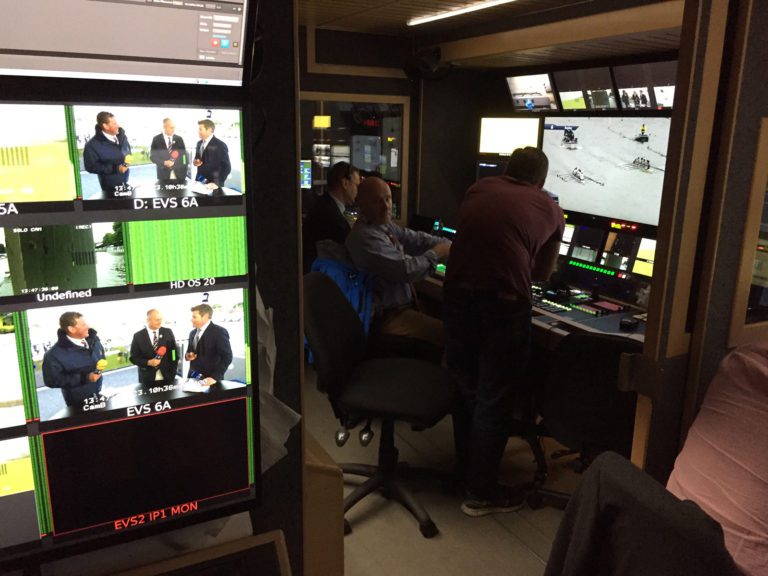
Photo Inside the mobile production studio for Henley Royal Regatta
Whilst they had no direct experience of rowing, they did have access to Matt Pinsent and me, and together we felt confident we could deliver a finished product well tailored for a rowing audience.
There was a huge amount of work to do in the lead up to the first broadcast in 2015. We had no modern day blueprint for a production specification. But we knew we really wanted it to be different. I was personally inspired by the way the America’s Cup had been covered in 2013, which fundamentally changed the way sailing was presented, and that helped fuel the ambition to deploy a drone.
Clearly the role of the drone and its operator would be absolutely critical and we were fortunate that we were able to find the only pilot licensed by the Civil Aviation Authority to fly as close to the crews as he did, and so capture the all-important aerial footage that has proved so engaging to our audience. It was a major task to clear all the hurdles required to get the drone airborne, but the results were stunning.
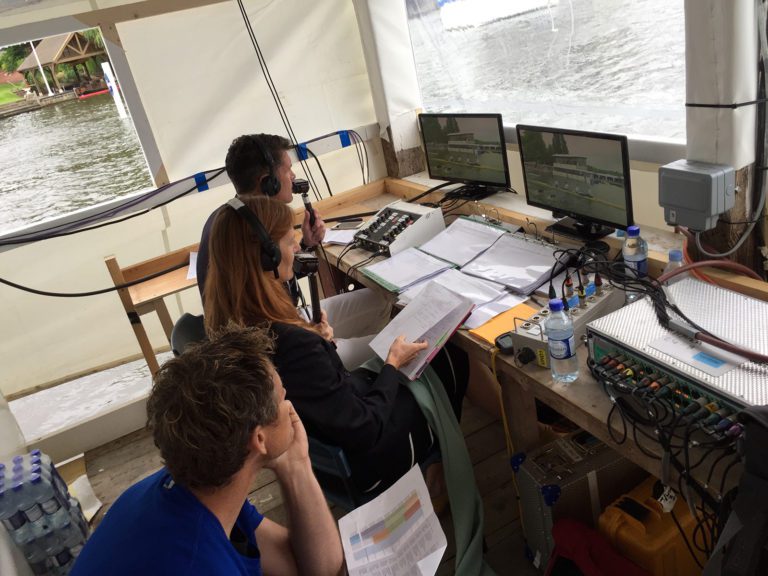
Photo James Cracknell, Sarah Cooke and Greg Searle: The commentary team on the finish line
Live streaming of the Regatta began largely as an experiment to test whether or not there was an audience out there that wanted this kind of content.
I think the experiment has worked. With 2 million views of our YouTube channel since we started, and with BT Sport taking our live coverage in the UK in 2016, we now have the proof that there is a substantial audience that wants to experience the Regatta in the way we’re presenting it.
The Regatta is currently footing the production cost, which is significant. For the moment we see it as our way of giving something back to the sport, and presenting the Regatta to the wider world in a powerful new way.
“Traditional rowing coverage can often feel a little remote from the crowds and atmosphere of the event. We wanted to avoid that.”
Andrew Preece
Andrew Preece, Executive Producer, Sunset+Vine:
We won the tender to produce the Regatta coverage at the end of 2014. We then spent much of that winter motoring up and down the river in Henley, going through undergrowth, working out where we could put cameras and equipment. It was good that Steve Redgrave understands the sport as well as media and he knew what he wanted to achieve.
Through working with Neil [Chugani] and Matt Pinsent we had a great creative working party to do it. Whilst my daughter had recently started to row in Oxford, at Hinksey, I had no experience of rowing prior to this project.
Our first challenge was to work out how to get the broadcast onto YouTube. The second challenge was how were we going to make the broadcast look good?
Throughout the whole process Neil and Matt were the main points of contact between ourselves and HRR. For six months prior to the Regatta we would meet regularly, either here at the Sunset + Vine production offices in London or on the river in Henley.
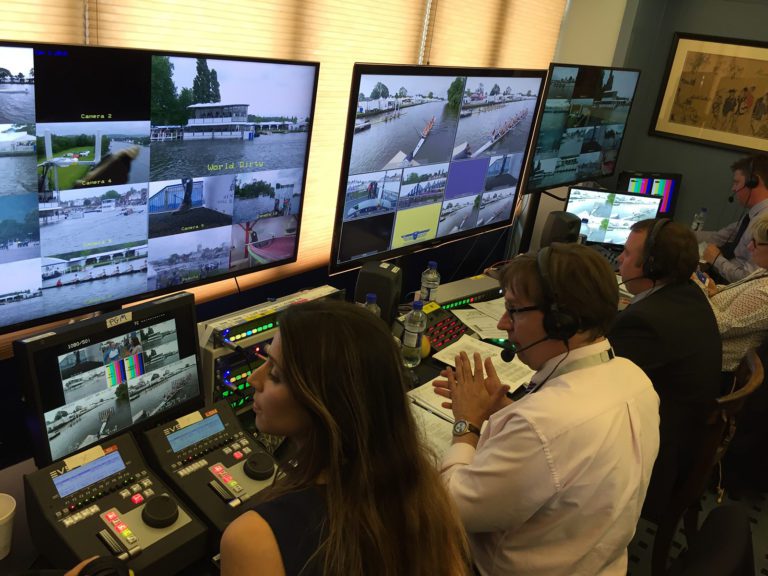
Photo Behind the scenes with the on-site production team.
Naturally the guys who install the infrastructure on the course were heavily involved in the logistical planning meetings. They were the ones who erected the platforms for our cameras and for the drones to land on.
The aim with the camera set-up was to take the traditional view of Henley – invariably a sea of blazers with the odd glimpse of a crew rowing past in the gaps between them – and turn that view on its head. We wanted the sport and the racing to be at the forefront of the action, with the blazers in the background.
If you can put those things together just right, you can capture a great atmosphere. Traditional rowing coverage, say at the World Cups or World Championships, can often feel a little remote from the crowds and atmosphere of the event. We wanted to avoid that.
We gave Neil and Matt a bit of a scare in rehearsal the day before the first Regatta in 2015. In television, there is so much planning and preparation leading up to the event, so for us the rehearsal generally ends up being just a chance to check the cameras and wiring and meet the guys you might be standing next to on the day. It’s rarely more in-depth than that. So while we were running through things the day before we had cameras coming on then going off again, graphics working and then not working, signals failing etc.
Neil and Matt, who were watching in the production gallery and expecting a perfect dress rehearsal of the coverage, started to fear they had made a big mistake. Apparently they went back to Steve Redgrave and told him it was absolute chaos. We found out afterwards what a relief it had been for them when we went live the next day with everything neatly in place and running well.
We had a debrief in September and agreed we would pick things up again in January 2017 to start preparing for next year’s Regatta.
In many ways I feel we may be at the start of a journey, the sort of journey that Wimbledon might have been on 30 years ago. When we first got the contract, I thought we would be waiting for the big races such as those between Germany and Great Britain, or between two Olympic scullers. But in reality there were so many exciting stories and so much drama involving crews of all levels. There ended up being a lot of close races that were not between the international crews. A win against the odds is engaging regardless of whether it’s between Olympians or schoolboys.
To subscribe to the Henley Royal Regatta coverage on YouTube, click here.
This article first appeared in

